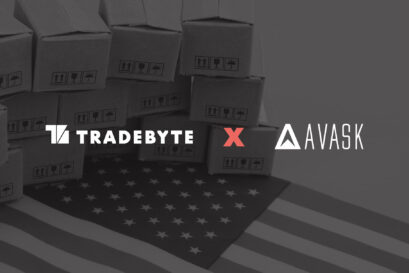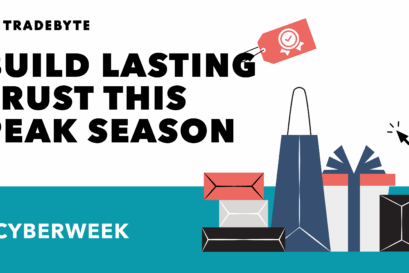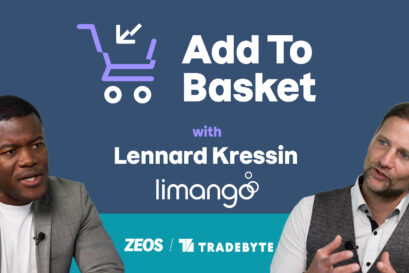How to start an online marketplace
Interested in building an online marketplace? Get the roadmap for success and find out how Tradebyte's expertise can accelerate your journey.

Launching an online marketplace can open exciting opportunities, connecting buyers and sellers while creating a thriving digital ecosystem. But how do you start an online marketplace without getting overwhelmed by technical and strategic hurdles?
This guide walks you through the essential steps to build your platform, from market research and business models to technology choices and growth strategies. Plus, we’ll show how Tradebyte’s TB.Market solution can simplify this journey if you’re in the fashion or lifestyle sectors.
1. Identify demand and find your niche
The first step in creating an online marketplace is gaining a deep understanding of the market you want to serve. Successful marketplaces don’t just happen by chance; they solve real problems for specific audiences. Start by conducting thorough research to identify gaps or friction points in existing solutions. This means engaging with potential buyers and sellers to validate that your idea truly meets their needs and offers a better alternative.
It’s important to evaluate the market’s growth potential too. Is the niche large enough and expanding, or is it stagnant? Understanding trends, competitive dynamics, and the total addressable market helps you determine whether your chosen niche can support sustainable growth. Additionally, profiling your ideal customer goes beyond basic demographics; you want to understand their motivations, pain points, and buying habits. This insight allows you to tailor your marketplace experience precisely to their needs.
Takeaway: You can’t serve everyone, and you don’t need to. Start with a clearly defined audience and a real problem to solve. The more focused your niche, the easier it’ll be to attract early users and build momentum.
2. Choose your business model
Once you’ve validated your market opportunity, the next step is deciding how your marketplace will operate. The business model you choose shapes every interaction on your platform. For marketplaces, this usually falls into three distinct categories:
- Consumer-to-Consumer (C2C): Individuals sell directly to other individuals (e.g., Gumtree, Depop).
- Business-to-Consumer (B2C): Businesses sell products or services directly to individual consumers (e.g. ASOS, Zalando).
- Business-to-Business (B2B): Businesses sell to other businesses (e.g., Alibaba, certain industrial supply marketplaces).
Each of these categories has different user dynamics, trust requirements, and value flows that will impact your operational and legal strategies.
Once your core business model is defined, you can then plan the operational and legal frameworks to support it. This includes carefully designing your users’ journeys, both for sellers and buyers. Consider common challenges like cancellations, returns, and disputes to ensure your platform has clear, efficient processes in place that align with your chosen revenue model.
Equally important is establishing a solid legal foundation early on, encompassing business registration, transparent terms of service, data regulation compliance (like GDPR or CCPA), and payment processing meeting all compliance and tax obligations relevant to your markets. Setting these legal and operational structures helps build trust, a vital currency in any marketplace.
Takeaway: Your business model sets the rules of the game for how people interact, how value flows, and how trust is built. Get this part right early, and your marketplace will have a solid foundation to grow from.
3. Decide how you’ll generate revenue
The next critical step is to define how your marketplace will generate revenue and what value proposition it offers to users. This choice of business model shapes every interaction on your platform and dictates your path to profitability.
Most online marketplaces primarily employ one or a combination of the following core business models:
- Commission-Based Model: This is perhaps the most common model, where the marketplace takes a percentage or flat fee from each transaction completed on the platform. Examples include eBay or Etsy. This model aligns your success directly with the success of your users (sellers).
- Subscription Model: Users (either buyers, sellers, or both) pay a recurring fee for access to the platform’s features or services. LinkedIn Premium or certain SaaS marketplaces utilise this. It provides predictable revenue but requires consistent value delivery to retain subscribers.
- Listing Fee Model: Sellers pay a fee to list their products or services on the marketplace, regardless of whether a sale occurs. Classifieds websites often use this, or real estate portals. This can be a good option for high-value items or specialised niches.
- Freemium Model: The marketplace offers basic services for free, with an option to upgrade to premium features for a fee. This can attract a large user base initially and then convert a percentage into paying customers.
- Advertising Model: While less common as a primary model for transaction-focused marketplaces, some generate revenue by selling ad space to sellers or third-party advertisers. This can be supplementary to other models.
- Lead Generation Model: Instead of facilitating a direct transaction, the marketplace connects buyers with service providers and charges the provider for the lead. This is common in service-based marketplaces (e.g., Thumbtack).
Takeaway: Monetisation isn’t one-size-fits-all. Choose a revenue model that fits your market and users, then stay open to evolving it as you learn what works best.
4. Select the best platform for your marketplace
The technology you choose will shape your marketplace’s performance, scalability, and long-term flexibility. Whether you prioritise speed-to-launch or complete control, selecting the right tech stack is critical for sustainable growth.
Building from scratch
Building an online marketplace platform from scratch gives you complete control over its look, feel, and function, but it’s an extremely expensive and time-consuming undertaking. This approach involves developing all the technology yourself, including the seller and buyer interfaces, payment systems, and backend infrastructure.
It’s a highly flexible option, ideal for businesses with complex needs or unique customer experiences that off-the-shelf platforms can’t support. You can shape every detail to match your vision, but you’ll need to define your features, choose a tech stack, design the user experience, and hire developers to bring it to life. You’ll also be responsible for managing security, scalability, and ongoing updates.
This path is only practical for those with a long-term roadmap and the in-house resources to support a significant investment in both time and money.
Open-source platforms
Open-source platforms like Magento or WordPress with WooCommerce offer a middle-ground option for building your marketplace. Instead of starting from scratch, you begin with a flexible foundation that you can customise to suit your needs. These tools come with large developer communities, plenty of plugins, and the freedom to shape your platform without having to build everything by yourself.
While this approach gives you more control than a SaaS solution and leverages large developer communities and plugins, it is not without significant drawbacks.
Open-source platforms demand significant technical expertise for installation, configuration, and ongoing maintenance. As your marketplace scales, managing updates, security vulnerabilities, and complex integrations can become extremely time-consuming and difficult to manage. This approach often requires a dedicated development team to ensure the platform remains stable and secure.
SaaS platforms: Fast and flexible
SaaS platforms are a popular choice for many startups and non-technical founders due to their speed and ease of use. They provide ready-made systems with built-in features, support, and regular updates, allowing you to launch quickly.
However, this convenience comes with significant trade-offs. The core limitation is a lack of flexibility. Customisation is often highly restricted, and your platform’s capabilities are entirely dependent on what the vendor supports, even with the use of APIs or add-ons.
Headless architecture
If you’re planning to scale your marketplace across regions, channels, or devices, a headless architecture can give you the flexibility you’ll eventually need.
In simple terms, headless separates the front-end (what users see) from the back-end (how things work). This means you can create custom designs, experiences, and interfaces for different platforms, like mobile apps, websites, or even in-store screens, while still using the same powerful system behind the scenes.
While this flexibility can make it a smart choice for marketplaces with major long-term ambitions, the separation means the initial setup is significantly more complex and requires a higher level of technical expertise.
TB.Market by Tradebyte
For businesses looking to avoid the complexity of custom builds or the resource demands of open-source platforms, particularly those in the fashion and lifestyle space, TB.Market by Tradebyte offers a purpose-built solution. It’s a ready-to-use, SaaS-based multi-vendor platform that takes the technical heavy lifting off your plate, so you can focus on growth from day one.
Unlike generic tools, TB.Market is tailored to the specific needs of fashion and lifestyle marketplaces. These sectors require agility, managing high product turnover, handling variants like sizes and colours, and supporting brand-led merchandising. It’s designed around these workflows, making it easier to manage catalogues, streamline seller onboarding, and meet customer expectations unique to the industry.
If you’re looking for a smarter way to launch and grow a marketplace without starting from scratch, TB.Market delivers the structure, flexibility, and industry fit to make it happen.
Takeaway: There’s no perfect tech stack, only the one that suits your goals, budget, and technical ability. Think long-term, but start with something you can launch and learn from.
5. Focus on the core features that matter
A great marketplace is built on a foundation of key features that serve its core users.
For buyers, this means a seamless and trustworthy shopping journey, with smart search, secure payments, and features like wishlists, personalised recommendations, and customer reviews to drive engagement.
Sellers need tools that simplify their operations, including a smooth onboarding process, flexible listing management, and robust analytics to track their performance. On the administrative side, the platform must have strong user management and dispute resolution, along with marketing tools and real-time analytics.
Finally, the entire system should be designed for scalability from the start, using a flexible and modular cloud architecture to support rapid growth without the need for costly overhauls.
Takeaway: You don’t need every feature, just the right ones. Build what creates the best experience for buyers, the smoothest tools for sellers, and the clearest view for you.
6. Launch, maintain and grow the marketplace
Launching is just the beginning. Attracting and onboarding quality sellers who align with your marketplace’s mission is key. Present a compelling value proposition, such as access to a new customer base, lower fees, and easy-to-use seller tools, and consider incentives like reduced commissions to build early momentum.
Attracting buyers requires creating buzz before launch through social media campaigns, SEO efforts, and promotions like discounts or limited-time deals. First impressions matter, so prioritise secure payments, clear return policies, and responsive customer service to build trust quickly.
Once your marketplace is running, providing accessible support channels for both buyers and sellers becomes essential for retention and satisfaction. Encouraging community engagement helps maintain marketplace integrity and reduce conflicts.
Finally, ongoing growth depends on tracking key performance indicators such as gross merchandise volume (GMV) and conversion rates. Experiment with new marketing tactics and be ready to pivot as technology and market trends evolve. Agility will keep your marketplace competitive and aligned with user needs.
Takeaway: Launching is just the beginning. Growth comes from listening, adapting, and improving over time. Stay close to your community, keep refining the experience, and always be ready for change.
Power your marketplace with Tradebyte
Whether you’re just shaping your marketplace idea or gearing up to scale, Tradebyte offers more than a platform; we offer partnership. TB.Market gives you a ready-to-use solution built on industry expertise, proven infrastructure, and a trusted network of retail partners and brands.
From hands-on onboarding to long-term scaling support, we help you launch faster, grow smarter, and focus on what matters most: building a sustainable, successful marketplace.
If you’re wondering how to build an online marketplace that’s scalable, efficient, and future-ready, book a discovery call with our team today.


